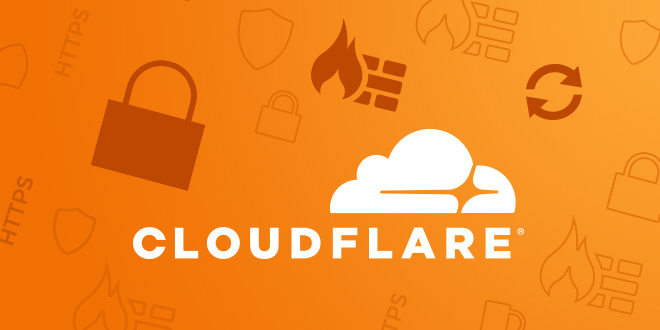Modernize Security Now: Cloudflare Report Warns of Rising Online Threats
In today’s fast-evolving digital landscape, organizations worldwide are confronted with an ever-growing array of online threats. Cloudflare’s recent report sheds light on the alarming situation where many organizations continue to grapple with outdated security approaches, amplifying their vulnerability to cyber-attacks. As cyber risks escalate, the report serves as a crucial wake-up call: modernize your security infrastructure now, or face potentially devastating consequences.
Online Threats on the Rise
Cyber threats have dramatically increased in frequency, sophistication, and severity. Security professionals are tasked with the challenging role of safeguarding sensitive information and ensuring operational continuity. Some of the most prevalent threats include:
- Ransomware: Malicious software that encrypts files and demands payment for their release.
- Phishing attacks: Deceptive attempts to obtain sensitive information by disguising as trustworthy entities.
- Distributed Denial of Service (DDoS) attacks: Overwhelming targeted systems with traffic to cause disruptions.
- Zero-day vulnerabilities: Exploits that take advantage of unknown security flaws.
- Insider threats: Malicious activities conducted by current or former employees.
Struggles with Outdated Security Approaches
Despite the apparent threat landscape, a significant number of organizations are encumbered with outdated security practices. Key issues identified in the Cloudflare report include:
Legacy Systems
Legacy systems often lack the necessary patches and updates to fend off new-age cyber threats. These antiquated infrastructures create weak links, making it easier for attackers to breach outdated defenses.
Manual Processes
Organizations still relying heavily on manual security processes often find themselves a step behind. Manual approaches are not only time-consuming but also prone to human error, increasing the likelihood of vulnerabilities being overlooked.
Reactive Security Measures
A reactive approach to security means responding to threats post-occurrence. However, given the speed at which modern cyber threats operate, a reactive strategy often proves too little, too late.
Necessity to Modernize Security Infrastructures
Modernizing security infrastructure isn’t just a recommendation—it’s a necessity. The following points highlight why organizations need to make this transition immediately:
Enhanced Protection with Automation & AI
Automation and Artificial Intelligence (AI) are revolutionizing the cybersecurity landscape. Automated systems can detect anomalies and respond to threats in real-time, significantly reducing reaction times and minimizing potential damage.
Zero Trust Architecture
Adopting a Zero Trust security model ensures that no individual or system is trusted by default, whether they are inside or outside the organization’s network. Verification is required for every user and device, providing an extra layer of protection.
Regular Updates and Patches
Constant updates and patches are essential to shield against the latest vulnerabilities and exploits. Automated patch management systems can ensure that all software and firmware are up-to-date without interrupting daily operations.
Steps to Modernize Your Security Approach
Transitioning to a modern security framework may seem daunting, but it doesn’t have to be. Here’s a step-by-step guide to help you get started:
1. Conduct a Security Audit
Perform a comprehensive security audit to identify existing vulnerabilities in your current setup. This will provide a clear understanding of the areas that require immediate attention.
2. Invest in Advanced Threat Detection Systems
Deploy modern threat detection systems that leverage Machine Learning (ML) and Artificial Intelligence (AI). These systems can understand and learn from emerging threat patterns, offering robust defenses against sophisticated attacks.
3. Educate and Train Employees
Human error is one of the leading causes of security breaches. Regularly educating and training employees on the latest security practices can mitigate risks related to phishing and other social engineering attacks.
4. Implement Multi-Factor Authentication (MFA)
Multi-Factor Authentication (MFA) adds an additional layer of security beyond simple passwords. It involves multiple verification methods, making it significantly harder for attackers to gain unauthorized access.
5. Adopt a Proactive Security Strategy
Switch from a reactive to a proactive security approach. Continuous monitoring, real-time threat intelligence, and predictive analytics can help organizations anticipate and neutralize threats before they materialize.
Conclusion
The Cloudflare report points to a critical juncture in the cybersecurity landscape. With escalating online threats and many organizations still lagging in their security approaches, immediate action is paramount. Modernizing security frameworks with advanced tools and practices is not just an option but a necessity to safeguard against present and future cyber threats.
In conclusion, organizations must heed Cloudflare’s warning: adopt modern, proactive security measures now or risk falling prey to increasing and evolving cyber threats. Remember, in the realm of cybersecurity, staying ahead of the curve is the best strategy for survival.
Source
For more detailed insights, visit the original article: [Modernize Security Now: Cloudflare Report Warns of Rising Online Threats](https://indiatechnologynews.in/new-cloudflare-report-shows-organisations-struggle-with-outdated-security-approaches-while-online-threats-increase/).

Hozzászólások